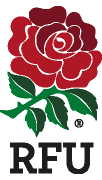For many schools the time of year of Sports Scholarship Assessments is fast approaching. Some schools still conduct testing alongside other longer established scholarships, which HMC rules confine to February. Sports Awards slipped in under the radar, and don't seem to be bound by any rules, so creep earlier as schools try to steal a march on their competitors. Maybe it's time for an American style Draft System.
A lot of time, effort and money goes into these programmes. It is curious therefore, how little attention is given to developing the selection process. Identifying talent in sport is a notoriously difficult thing to do at any level. When it occurs across maturation (as it does for any school trying to make these awards at 11+ and/or13+) the difficulty intensifies. Attempts to do it in activity which gives undue importance to size (such as Rugby) make it almost impossible.
It depends on the success criteria. Most attempts to assess sports ability in 13 year olds create a snapshot of effectiveness on that day. If success means winning the day after the award, this will work. However, if the purpose of the award is to predict performance at some stage in the future, the problem is much greater. This is because many of the factors measured on a given day do not turn out be reliable predictors of performance further down the line. High performing schools attempting to identify potential in Rugby playing at age 13 have less than 25% success where this is defined as reaching Divisional level or better by the Sixth Form. In South Africa, only 22% of Craven Week participants at 13 are still involved at 18. Why?
Most selection mechanisms employed by schools, academies and representative teams give undue prominence to anthropology and age. Age is a complex factor with several components:
- Relative Age. This has come to prominence through popular books such as Malcolm Gladwell's "Outliers", which prove beyond doubt that children born in the first quarter of the school year have advantages of size and opportunity that are enhanced through unequal opportunity
- Maturational Age. The time at which maturity is reached varies massively, and is different between races (with Afro Carribeans maturing before Caucasians). Most of these advantages, which can be massive at age 13, even themselves out across maturity
- Sporting Age. Children who have played with their parents and been taken to clubs from an early age might have played sport for 8 years more than others by age 13. This is a measure of experience and coaching quality, not talent. They are more accomplished at that time, but this effect reduces with age and coaching
Therefore, schools who conduct tests based on speed, strength, performance in skill tests and current ability in full versions of traditional games give undue anthropological advantage to early birthdays, early maturers and those who have been playing those games longest. That is fine if the aim is to win games the week after. But is doesn't have good predictive power on the other side of maturity. There is also evidence that children identified as talented in this way lack the resilience to cope with not having it all their own way at a later stage.
So what are better predictors? It is widely recognised that psychological factors play a large part in adult sporting success. Willingness to persist in the face of disappointment and failure, tolerance of high practice volumes, empathy for team mates and drive to succeed in the future are all characteristics of high performing adults. The route to sporting success is rarely (if ever) smooth. The Christmas trade in sporting biographies would evaporate if it were. Early maturers rarely have these personal qualities however, as they have often known only success by that stage. Their reaction to difficulty is unknown and work ethic often untested. Their only experience is of success which has come easily, and of being told how good they are and given special treatment. None of that is a good foundation for ultimate success. One of the factors identified by Rugby League that predicts high performance is labelled "coachability", or willingness to cooperate with coaches, to seek advice to be prepared to work hard to implement it. Many early maturers lack that quality, appear to think they know best and not wanting to stretch themselves.
Another predictor of success is type and volume of practice. Willingness to undertake demanding practice, to make sacrifices to complete it, points towards high performance. Whilst the practice sufficiency model (popularised in the notion that all that is required to create excellence is 10,000 hours of practice) has been questioned, there is no doubt that such practice is a significant factor, though almost certainly not enough on its own. The most able at 13 have often never been required to show sacrifice or commit to demanding practice: their capacity to do so remains largely unknown.
It is suggested that high performance post maturation is a product of 50% mental factors, 35% practice and 15% anthropological. And yet sports award testing is often up to 90% anthropological.
How might testing be improved then? Certainly some attempt to measure psychological factors would appear crucial. Maybe a psychometric test will ultimately appear, but until then measures of
determination gathered over a number of situations will be necessary. Readiness to persist in the face of difficulty can be subjectively measured. The US marines have a fried chicken test, in which participants take part in what they think is a test of endurance. At the end, when all are exhausted and starving, an experimenter brings in a plate of fried chicken and then he leaves. There are fewer pieces of chicken than participants. A hidden experimenter notes which tired soldiers take the chicken for themselves and which desist. That is the real test. Cooperation in collecting equipment, volunteering for arduous, but apparently unrelated tasks all suggest resilience and coachability. Interviews, even written tests, can help identify occasions when applicants have persevered or helped team mates succeed. It's the Tesco test. Every little (piece of evidence) helps.
Simple games which no one has played previously can help remove the experience factor. Measures of work rate, creativity, communication and games sense can be made in this environment, where previous coaching has no influence. Tests in playing conventional games must minimise the influence of size and speed if they are to be predictors of post maturation performance. Power in rugby, hockey and cricket is proven to level out across maturation, and Rugby League research suggests that late maturers end up faster. Skill tests and games which give prominence to size and speed are unlikely to be good predictors.
In any type of testing, accuracy is increased with volume of evidence. It is therefore necessary for testing to be rigorous, and to take account of evidence from all sources, including indirect ones. An overnight stay allows many covert judgements of sociability and cooperation. Seeing pupils in their own environment and watching their interaction with peers and coaches also provides evidence. One American basketball scout focuses on players during time outs. Those who pay close attention to the coach, encourage team mates and have upbeat body language score more highly than those who drift on their own at the back, or treat reserves with disdain. A large volume of small assessments gives the best chance of a complete picture. Some talent shouts at selectors. But some whispers. The key is a selection process than has best chance of identifying both.
Sports Awards have massive importance for schools. They can consume huge financial resources, and impact not just upon competitive results, but also on the tone of sport in the school. No one would dispute that they want Award holders to be peer leaders and role models, though few selection mechanisms make any systematic attempts to predict these qualities. Rarely are birthdays considered, with advantage given to younger pupils, or those yet to mature. There would be much sense in these being the tie break issues in close selection decisions. Or a focus for smaller, lower performing schools who cannot compete in the market for the most able.
Great effort is given to encouraging dominant performers to apply for Sports Awards. The selection process probably deserves even greater attention, as that is the vital issue in determining the success of the scheme. But test design is, perversely, the poor relation of the programme. Everyone believes they can spot talent. But their methods identify only current performance. What the best selection processes do is predict future high performance. And that is an altogether different matter.













